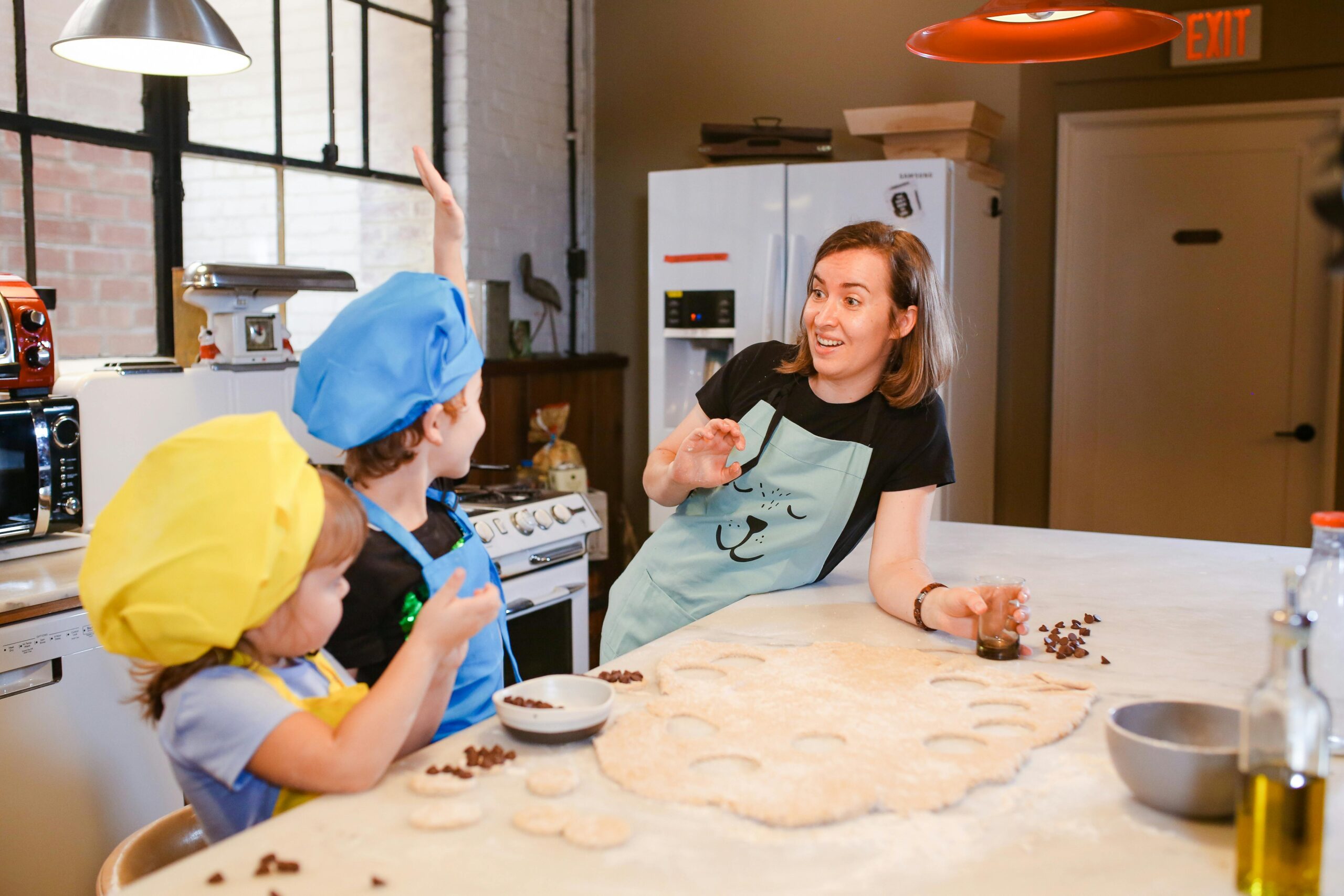By utilizing creative methods, you can get your kids interested in cooking – and trying new flavors.
So, let’s take a look at five creative ways to involve children in cooking…
1. Perform Baking Science Experiments
Here’s a creative idea: turn your kitchen into a bustling laboratory where baking becomes a science exploration for kids.
For instance, you could involve your youngsters in these experiments:
- Discovering the Power of Yeast. Explore how yeast causes bread dough to rise. Compare two batches, one with yeast and another without, and watch the differences unfold as tiny bubbles inflate in the dough.
- Compare Baking Powder with Baking Soda. Show what happens when baking soda reacts with vinegar versus using just baking powder in recipes like muffins or pancakes.
- Create Color-Changing Treats. Use natural indicators like red cabbage juice that change color based on acidity levels in cakes or cookies.
This hands-on learning approach will not only spark curiosity but also help your children grasp fundamental STEM concepts through edible experiments. The bonus? They get to relish delicious treats they created themselves!
2. Introduce Your Kids to Cooking and New Cuisines with Meal Kits
Meal kits are a super-duper way to engage kids in cooking. Look for ones that provide pre-measured ingredients, as that will eliminate the guesswork – and reduce kitchen messes!
Options such as HelloFresh, which is the best meal kit delivery service in the US, make cooking a delightful learning experience. Families can explore new cuisines together or recreate classic favorites with ease.
As children measure, mix, and cook alongside parents, they will learn valuable skills while sharing laughter and creating delicious meals that everyone looks forward to enjoying.
3. Spark Your Children’s Creativity by Cooking with Unusual (But Tasty) Ingredients
Introduce kids to the world of exotic ingredients and watch their culinary imagination soar.
For instance, offer vibrant dragon fruit or crunchy jicama to inspire curiosity and exploration in cooking.
Encourage them to invent new recipes by combining these unique elements with familiar favorites. This approach helps develop adventurous palates while teaching adaptability and innovation in the kitchen.
With each experiment, children will gain confidence as they discover how flavors interact, ultimately creating memorable meals that tell a story on every plate.
4. Encourage Artistic Expression in Plating
Transform mealtime into an art class by letting kids design their plates like canvases!
Use a variety of colorful fruits and vegetables to spark creativity and joy. Carrot sticks, bell peppers, or vibrant berries become good tools for expression.
Challenge children to create scenes or patterns before they dig in.
This approach fosters an appreciation for food’s visual appeal while making healthy eating more enticing.
Kids will gain a sense of accomplishment as they turn meals into edible masterpieces that delight both eyes and taste buds.
5. Take Sensory Cooking Adventures Together
Lastly, turn cooking into a full sensory exploration that captivates young minds. You could invite kids to do things like:
- Listen to the sizzle of sautéing onions.
- Feel the textures of different grains.
- Breathe in aromatic herbs like basil and rosemary.
Encourage tasting ingredients at each stage, highlighting how flavors evolve during cooking.
This immersive experience deepens their connection with food while building foundational culinary skills.
By engaging sight, sound, touch, taste, and smell in the kitchen adventure, your children will gain a rich understanding of how ingredients work together to create delicious dishes everyone can savor.

